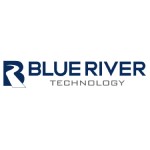
The agriculture robot industry is expected to grow rapidly, reaching $56.9 billion by 2030. This represents a significant increase from $13.32 billion in 2023.
In this guide we will try to explore these robots, how their capabilities are revolutionizing every stage of food production, from the placement of seeds to the harvesting of fruits without a single scratch.
We will have a look at:
- The wide range of tasks robots address, from tedious weeding to complex milkings
- The potential benefits of these machines for farmers
- The challenges and considerations surrounding this tech revolution, from affordability to ethical concerns
- Well-known robotics companies in 2024
Whether you’re interested in the technical side of agribusiness, a curious consumer, or someone directly involved in agriculture, this guide will show you the role robots are playing in feeding the world.
What is an Agricultural Robot?
An agricultural robot, also known as agribot, is a machine designed to autonomously or semi-autonomously perform tasks within the agricultural industry. These machines range in size and complexity, from small devices used for weeding or soil analysis to large, powerful machines capable of planting, harvesting, and even milking livestock. Utilizing sensors, AI, and advanced mechanics, they aim to augment and, in some cases, replace human labor in various agricultural processes.
Their increasing presence promises to improve efficiency, precision, and overall productivity within the farming sector, potentially addressing challenges such as labor shortages, resource constraints, and the need for sustainable practices.
Difference Between Robots, Robotics, and Automation
While all interrelated, agricultural robots, robotics, and automation represent distinct concepts within the agricultural landscape. Agribots are the physical machines, specifically designed for farming tasks like planting, milking, or harvesting.
Robotics, on the other hand, encompasses the broader field of designing, building, and operating robots, including in agriculture but also in other industries. Think of it as the science and engineering behind the robots themselves.
Finally, automation refers to the broader use of technology to perform tasks traditionally done by humans, regardless of whether robots are involved. This could include automated irrigation systems or milking machines that don’t involve robots specifically.
So, agribots are the tools, robotics is the know-how to build them, and automation is the overall goal of reducing human intervention in a task.
Types of Agricultural Robots
Robots tackle various aspects of food production, each with its own unique capabilities. The most common types of agricultural robots include the ones for:
- Planting and Seeding
- Weeding
- Harvesting
- Milking
- Livestock Management
- Greenhouse
- Autonomous Drones
As technology advances, we can expect even more specialized and intelligent machines to emerge, transforming farming and ensuring a sustainable future for food production.
Main Applications of Agricultural Robots
The main applications of these machines are:
- Harvesting
Robots are revolutionizing harvests with impressive dexterity. Robotic arms equipped with computer vision carefully pick fruits and vegetables, minimizing damage and maximizing yield. From strawberries to pumpkins, specialized machines are being developed for diverse crops - Weeding
These tireless machines patrol fields, equipped with cameras and sensors to identify and eliminate unwanted weeds. This reduces reliance on herbicides, minimizes environmental impact, and saves farmers valuable time and resources. Some even utilize lasers or specialized “weed eaters” for precise removal - Planting
They navigate fields with pinpoint accuracy, planting seeds at optimal depths and spacing according to soil data and desired crop density. This ensures uniform growth and maximizes yield potential - Fertilizing
Robots aren’t limited to above-ground tasks. Advanced systems inject fertilizer directly into the root zone, delivering nutrients precisely where plants need them. This targeted approach minimizes waste, optimizes resource use, and promotes healthy growth - Packing and Palletizing
These machines bring efficiency to post-harvest processes. They sort, grade, and pack fruits and vegetables with incredible speed and accuracy. They can handle delicate produce without damage, while palletizing robots stack boxes precisely for efficient transport and storage - Maintaining Crops
They act as vigilant guardians, constantly monitoring crop health. Drones capture aerial images to identify disease or pest outbreaks, while ground-based machines collect data on factors like soil moisture and nutrient levels
Beyond these core applications, the potential of agribots is wide:
- Livestock management
Robots monitor animal health, automate milking, and even use drones for herd surveillance, promoting animal welfare and improving farm efficiency - Greenhouse automation
Inside controlled environments, robots precisely regulate temperature, humidity, and nutrient levels, creating optimal growing conditions for high-value crops - Research and development
Robots aid in agricultural research, conducting precise tasks like collecting plant samples or testing different planting strategies, accelerating advancements in farming techniques
As technology continues to evolve, we can expect even more innovative applications for agricultural robots.
How to ship heavy equipment via ocean freight?
What Are the Most Known Agricultural Robotics Companies?
The agricultural sphere is filled with innovative companies pushing the boundaries of food production. While the landscape is constantly evolving, several key players have established themselves as frontrunners:

Blue River Technology
Based in California, this company’s “LettuceBot” autonomously thins and weeds lettuce fields, reducing reliance on herbicides and manual labor. The company was acquired by John Deere in 2017.

Agrobot
This Polish company’s strawberry harvester improves efficiency and yield while minimizing waste.

Harvest CROO Robotics
Another Californian company, Harvest CROO specializes in robots for strawberry harvesting, with their latest model being able to navigate uneven terrain and pick at human speed.

Naïo Technologies
This French company’s “Ted” and “Jo” robots use lasers to autonomously weed vineyards, improving efficiency and reducing herbicide use.

BouMatic
Established in Wisconsin, BouMatic offers automated milking systems like “Gemini” and “Galaxy”, ensuring animal welfare and improving milk quality.

Clearpath Robotics
This Canadian company provides robotic platforms for various agricultural applications, including weed control, harvesting, and data collection.

Tortuga AgTech
Based in Colorado, Tortuga develops robots for automated strawberry and table grape harvesting, utilizing computer vision and machine learning for precise fruit identification and picking.

FFRobotics
This Israeli company is developing a robotic fruit harvester targeting citrus fruits, aiming to address labor shortages and increase efficiency.
This is a short list of agricultural robotics companies, and new players are constantly emerging. However, these companies show the diverse and innovative landscape of agricultural robotics, shaping the future of how we grow and harvest our food.
What Are the Main Advantages of Using Agricultural Robots?
What are the real advantages of using these machines in modern farming? Here are some key benefits.
Increased Efficiency and Productivity
Robots don’t tire, get sick, or take breaks. They can work tirelessly around the clock, performing repetitive tasks with great accuracy and speed. This translates to higher crop yields, faster harvests, and more efficient use of resources like time, water, and fertilizer.
Reduced Labor Costs
As robots take over labor-intensive tasks, the reliance on manual labor decreases. This can reduce labor costs for farmers, especially in regions facing labor shortages.
Improved Precision and Consistency
They can plant seeds at exact depths, apply fertilizer with pinpoint accuracy, and harvest fruits without a bruise. This consistency minimizes waste, optimizes resource use, and improves overall crop quality.
Enhanced Data Collection and Analysis
As we mentioned earlier, modern robots are equipped with sensors and cameras, collecting valuable data on soil conditions, crop health, and environmental factors.
Reduced Reliance on Chemicals
Robots like weeders and targeted application systems can minimize the need for herbicides and pesticides. This not only benefits the environment and human health but also reduces costs associated with chemical use.
Safer Working Conditions
Repetitive and physically demanding tasks can be hazardous for farmers. Robots can take over these tasks, reducing the risk of injuries and exposure to chemicals, thereby improving farm safety and worker well-being.
Attracting New Talent
The integration of technology like robots can make agriculture more appealing to younger generations, attracting new talent and expertise to the industry, and ensuring its long-term sustainability.
The advantages of agricultural robots are undeniable, paving the way for a more efficient, sustainable, and data-driven future of farming.
Challenges and Considerations of Using Agricultural Robots
There are always two sides to a coin, and we should mention the challenges and considerations of using agribots.
Cost
The initial investment in robots can be substantial, posing a barrier for smaller farms with limited budgets. Government subsidies or financing options might be needed to bridge this gap.
Job Displacement
As robots automate tasks, concerns arise about potential job losses for farm workers. Training programs and support systems are crucial to help displaced workers transition to new roles within the evolving agricultural landscape.
Technical Expertise
Operating and maintaining these machines requires technical knowledge and training, which might not be readily available in all farm communities.
Infrastructure
Agribots often require specific infrastructure, like charging stations or internet connectivity, which might not be readily available in rural areas.
Data Privacy and Security
Robots collect vast amounts of data on crops, soil, and livestock. Data security and privacy measures are necessary to protect user information and prevent misuse.
Ethical Considerations
Questions arise around the responsible use of robots regarding animal welfare, environmental impact, and the potential for increased concentration of power within large agribusinesses.
Maintenance and Repair
Ensuring agribots function optimally requires a reliable maintenance and repair infrastructure, especially in remote locations.
Regulatory Landscape
Clear and transparent regulations are needed to ensure the safe and responsible use of agribots, addressing concerns about worker safety, environmental impact, and data privacy.
Social Acceptance
Not all farmers readily embrace new technologies. Building trust and promoting understanding of the benefits and potential of robots will be crucial for widespread adoption.
Long-Term Impact
Assessing the long-term social, economic, and environmental impacts of robotic agriculture is essential. Ongoing research and evaluation are needed to ensure sustainable and equitable development.
Despite these challenges, addressing them proactively paves the way for a future where agricultural robots can contribute significantly to a more efficient, sustainable, and productive food system. By collaborating, innovating, and prioritizing ethical considerations, people can use the power of these machines to benefit farmers, consumers, and the environment alike.
Conclusion
The landscape of agriculture is undergoing a transformative shift, with sophisticated robots playing a pivotal role in revolutionizing every stage of food production. From precise seed placement to delicate fruit harvesting, these machines offer a glimpse into a future of increased efficiency, improved sustainability, and data-driven insights.
Atlantic Project Cargo is a leading agricultural equipment shipping company, and we understand the crucial role of logistics in the global food chain. We offer specialized solutions for shipping agricultural robots, ensuring they reach farmers worldwide efficiently and safely. Whether you’re a manufacturer, distributor, or farmer, Atlantic Project Cargo can be your trusted partner in bringing the future of agriculture to life.
Contact us today to discuss your specific needs and start the journey towards a more sustainable and productive future of food.
Read More



